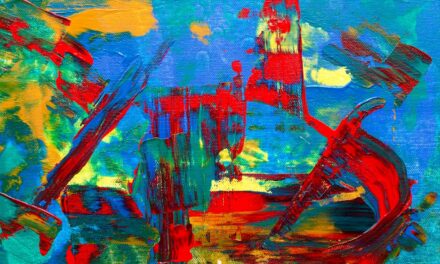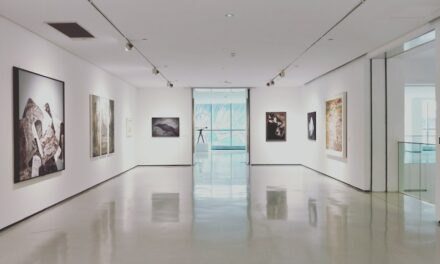Creative block is a phenomenon that many artists and writers encounter at some point in their careers. It manifests as a mental barrier that prevents the flow of ideas and the execution of creative work. Understanding the root causes of this block is essential for overcoming it.
Often, creative block can stem from various sources, including fear of failure, perfectionism, or external pressures. For instance, an artist may feel overwhelmed by the expectations of their audience or the art market, leading to a paralysis of creativity. Recognising these triggers is the first step towards addressing them.
Moreover, creative block can also arise from a lack of inspiration or motivation. When artists find themselves in a monotonous routine or surrounded by uninspiring environments, their creativity can dwindle. It is crucial to identify whether the block is due to internal factors, such as self-doubt, or external influences, like a chaotic workspace.
By pinpointing the specific reasons behind the block, artists can begin to formulate strategies to combat it and reignite their creative spark.
Summary
- Creative block can manifest as a lack of motivation, self-doubt, or fear of failure.
- Look for inspiration in the small details of everyday life, such as nature, conversations, or art.
- Embrace failure as a learning opportunity and a stepping stone to growth and improvement.
- Set realistic goals and break them down into manageable steps to overcome creative barriers.
- Experiment with new techniques and mediums to keep your creativity fresh and evolving.
Finding Inspiration in Everyday Life: Tips for Sparking Creativity
Inspiration often lurks in the most mundane aspects of daily life, waiting to be discovered by those willing to look closely. One effective way to spark creativity is to cultivate a habit of observation. This can involve taking leisurely walks in nature, visiting local markets, or simply sitting in a café and watching the world go by.
By immersing oneself in different environments and paying attention to the details—such as colours, textures, and interactions—artists can gather a wealth of ideas that can be transformed into their work. Another approach to finding inspiration is to engage with various forms of art and culture. Visiting galleries, attending performances, or reading literature can expose artists to new perspectives and techniques.
This cross-pollination of ideas can lead to unexpected connections and innovations in one’s own practice. Additionally, keeping a journal to document thoughts, sketches, or snippets of conversation can serve as a valuable resource for future projects. By actively seeking out inspiration in everyday life, artists can cultivate a rich tapestry of ideas that fuels their creativity.
Embracing Failure: How to Learn and Grow from Setbacks
Failure is often viewed as a negative outcome, but for artists, it can be an invaluable teacher. Embracing failure means recognising that setbacks are an integral part of the creative process. When an artwork does not turn out as envisioned or a written piece fails to resonate with its intended audience, it is essential to reflect on what went wrong rather than succumbing to discouragement.
This reflection can lead to insights that inform future work and ultimately contribute to artistic growth. Moreover, understanding that failure is universal among artists can help alleviate the pressure to achieve perfection. Many renowned artists have faced numerous rejections and disappointments before finding success.
By reframing failure as an opportunity for learning rather than a definitive end, artists can foster resilience and adaptability in their practice. This mindset not only encourages experimentation but also allows for a more authentic expression of one’s artistic voice.
Setting Realistic Goals: Strategies for Breaking Through Creative Barriers
Setting realistic goals is crucial for overcoming creative barriers and maintaining motivation. Artists often set lofty ambitions that can lead to feelings of inadequacy when they are not met. Instead, breaking down larger projects into smaller, manageable tasks can create a sense of accomplishment and progress.
For example, an artist might aim to complete a series of paintings by setting weekly targets for each piece. This approach not only makes the project feel less daunting but also allows for regular reflection and adjustment along the way. Additionally, it is important for artists to remain flexible with their goals.
Life circumstances and creative energy can fluctuate, so being adaptable in one’s planning can prevent frustration.
By establishing realistic and adaptable objectives, artists can navigate through creative barriers with greater ease and confidence.
Exploring New Techniques: Ways to Expand Your Creative Horizons
One effective way to rejuvenate creativity is by exploring new techniques and mediums. Stepping outside one’s comfort zone can lead to exciting discoveries and innovations in artistic practice. For instance, a painter accustomed to working with oils might experiment with watercolours or mixed media.
This exploration not only broadens technical skills but also encourages fresh perspectives on familiar subjects. Workshops and classes can provide structured opportunities for learning new techniques while also fostering connections with other creatives. Engaging with peers who share different artistic approaches can inspire collaboration and exchange of ideas.
Furthermore, online resources such as tutorials and forums offer endless possibilities for self-directed learning. By embracing new techniques, artists can invigorate their work and push the boundaries of their creativity.
Seeking Feedback and Collaboration: Utilising Support Systems for Inspiration
Collaboration and feedback are vital components of the creative process that can significantly enhance an artist’s work. Engaging with fellow artists or writers allows for the exchange of ideas and constructive criticism that can lead to new insights. Whether through formal critique groups or informal discussions with friends, receiving feedback can illuminate blind spots in one’s work and inspire new directions.
Moreover, collaboration opens doors to diverse perspectives that enrich the creative experience. Working alongside others can introduce artists to different styles, techniques, and concepts that they may not have considered independently. This synergy often results in innovative outcomes that reflect a fusion of ideas.
By actively seeking feedback and collaboration, artists can cultivate a supportive network that nurtures their creativity and encourages growth.
Establishing a Routine: Creating a Consistent and Productive Creative Practice
Establishing a consistent routine is essential for fostering creativity and productivity. Many successful artists attribute their achievements to disciplined practices that prioritise time for creative work. This routine does not have to be rigid; rather, it should be tailored to fit individual preferences and lifestyles.
For some, this may mean dedicating specific hours each day to creating art or writing, while others may find inspiration in spontaneous bursts of creativity. Incorporating rituals into the routine can also enhance focus and motivation. This could involve setting up a dedicated workspace, engaging in warm-up exercises before starting a project, or even listening to specific music that inspires creativity.
By creating an environment conducive to artistic expression and establishing regular habits, artists can cultivate a productive practice that nurtures their creativity over time.
Practising Self-Care: Taking Care of Your Mental and Emotional Well-being for Sustained Creativity
Self-care is an often-overlooked aspect of maintaining creativity over the long term. The demands of artistic practice can lead to burnout if not balanced with adequate care for one’s mental and emotional well-being. Artists should prioritise activities that promote relaxation and rejuvenation, such as spending time in nature, engaging in physical exercise, or practising mindfulness techniques like meditation or yoga.
Additionally, recognising the signs of stress or fatigue is crucial for sustaining creativity. Taking breaks when needed and allowing oneself time away from creative work can provide valuable perspective and recharge one’s energy. By prioritising self-care, artists create a healthier relationship with their work, enabling them to approach their creative practice with renewed enthusiasm and clarity.
In conclusion, navigating the complexities of creativity requires understanding the challenges that arise along the way. By identifying creative blocks, seeking inspiration in everyday life, embracing failure as a learning opportunity, setting realistic goals, exploring new techniques, collaborating with others, establishing routines, and practising self-care, artists can cultivate a vibrant and sustainable creative practice. Each step taken towards nurturing creativity not only enhances individual artistic expression but also contributes to a richer cultural landscape for all to enjoy.
If you are looking for some artistic inspiration, why not visit the National Museum of Modern and Contemporary Art in Korea? This article provides an introduction to the museum and its collection, which may help reignite your creative spark. Exploring different art forms and styles can often help overcome creative block, so a visit to the Institute of Contemporary Art in Boston could also be beneficial. For more inspiration, check out the article “Canvas of Dreams” which explores the power of art to transport us to different worlds and ignite our imagination. com/an-introduction-to-the-national-museum-of-modern-and-contemporary-art-korea-mmca/’>National Museum of Modern and Contemporary Art in Korea, Canvas of Dreams.
FAQs
What is creative block?
Creative block, also known as artist’s block, is a period of time when an artist or creative individual struggles to generate new ideas or produce work. It can be a frustrating and challenging experience, often leading to feelings of stagnation and lack of inspiration.
What are the common causes of creative block?
Creative block can be caused by a variety of factors, including stress, self-doubt, fear of failure, perfectionism, burnout, lack of motivation, and external pressures. Additionally, personal or professional challenges, as well as environmental factors, can contribute to creative block.
How can one overcome creative block?
There are several strategies that can help individuals overcome creative block, such as taking a break and engaging in activities unrelated to their creative work, seeking inspiration from other artists and sources, experimenting with new techniques or mediums, setting realistic goals, and practicing self-care and mindfulness. Additionally, seeking support from peers or mentors, and exploring new environments or perspectives can also help reignite artistic inspiration.
What are some tips to reignite artistic inspiration?
Some tips to reignite artistic inspiration include:
– Taking a break and engaging in activities unrelated to creative work
– Seeking inspiration from other artists and sources
– Experimenting with new techniques or mediums
– Setting realistic goals
– Practicing self-care and mindfulness
– Seeking support from peers or mentors
– Exploring new environments or perspectives



